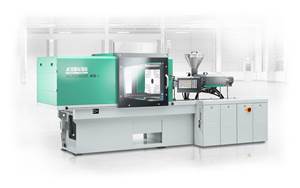Textile Recycler Saved by Carpets
This is a tale of globalization with a happy ending.
This is a tale of globalization with a happy ending. One of the world’s two largest carpet recyclers got into the business by accident—or necessity—when its fiber reclaim business fell victim to migration of U.S. garment production overseas. The upshot is a boon to users of post-consumer PP, PET, and nylon.
Ron Greitzer, president and co-owner of Los Angeles Fiber in Vernon, Calif., has been the world’s largest recycler of post-consumer carpet for nine of the past 10 years. It wasn’t a crowded field. Most firms that tried carpet recycling belonged to big carpet mills, and even those pockets weren’t always deep enough for this tough job.
Last year L.A. Fiber was a close second behind Shaw Industries’ Evergreen Nylon Recycling plant in Augusta, Ga., which depolymerizes nylon 6 from carpets. Evergreen reclaimed 100 million lb last year (including some from L.A. Fiber), while L.A. Fiber recycled 89 million lb. Carpet America Recovery Effort (CARE), a carpet industry group, reports that a total of 296 million lb were recycled last year.
Greitzer and his father started L.A. Fiber in 1983 to recycle PET bottles into fiberfill. They expanded into recycling textile waste from the garment industry into other fiber products like industrial carpet underlay and cotton upholstery fiberfill. That flourished until the NAFTA agreement was revised and expanded in 1998. Over the next five years, major U.S. garment makers moved manufacturing offshore, and L.A. Fiber’s feedstock dwindled. That’s when Greitzer converted his big investment in fiber-reclaiming machinery to processing waste carpets.
The idea came from the baled garment waste. Bales are bound with wire and squared off on the top and bottom with a piece of cardboard or old carpet to allow stacking. Greitzer noticed that operators removed the wire and cardboard as they opened bales, but let old carpet pieces go through with the textile scrap. He asked if that didn’t hurt the machinery, and operators said they had been putting the carpet pieces through for years without a problem.
Before L.A. Fiber could recycle used carpet, the firm had to sort it by fiber type and figure out how to remove the backing. Carpet is approximately 50% face fiber and 50% latex-rubber backing. Face fiber can be shaved off the backing, but that leaves roughly a third of the fiber content behind.
L.A. fiber sorts carpet by hand, which Greitzer considers the best approach. Workers identify face fiber with hand-held NIR devices, then drag and push the bulky carpet pieces onto conveyors that fan out to shredders dedicated to each fiber type.
The sorted carpet (nylon 6 and 66, PET, PP, and wool) is shredded. Shredders have to be blown clean before a face-fiber changeover. Shredded carpet is amassed by fiber type, then cleaned in the firm’s proprietary pounding process to loosen the latex backing. The plant shuts down three times a shift for breaks and lunch, while a crew comes in to clean up and remove accumulated backing material from the dust collectors. The cleaning lines process about 12,000 lb/hr, and they too must be blown clean for changes of face fibers.
After the carpet has been identified and shredded, and most of the backing removed, the cleaned fiber is baled. Some is sold to other plastic recyclers. But most goes to L.A. Fiber’s textile recycling plant, where the fiber is chopped, mechanically cleaned further, and pulled apart into lofted fuzz. Greitzer believes this is the first use of textile recycling equipment for carpets.
The cleaned fluff is then baled and a substantial share is sold to compounders. The rest—PP, PET, and nylon 6 and 66—is blended together in large silos and used to make synthetic carpet underlay by Reliance Carpet Cushion, parent of L.A. Fiber.
Related Content
Resins & Additives for Sustainability in Vehicles, Electronics, Packaging & Medical
Material suppliers have been stepping up with resins and additives for the ‘circular economy,’ ranging from mechanically or chemically recycled to biobased content.
Read MoreAvoid Four Common Traps In Granulation
Today, more than ever, granulation is an important step in the total production process. Our expert explains a few of the many common traps to avoid when thinking about granulators
Read MoreRecycled Material Prices Show Stability Heading into 2023
After summer's steep drop, most prices leveled off in the second half.
Read MoreCalculating an Injection Molding Machine’s Carbon Footprint
Arburg has utilized the ISO TS 1467:2018 standard, which determines the greenhouse gas emissions of a product, to help its customers calculate the product carbon footprint (PCF) of its injection molding machines.
Read MoreRead Next
Processor Turns to AI to Help Keep Machines Humming
At captive processor McConkey, a new generation of artificial intelligence models, highlighted by ChatGPT, is helping it wade through the shortage of skilled labor and keep its production lines churning out good parts.
Read MorePeople 4.0 – How to Get Buy-In from Your Staff for Industry 4.0 Systems
Implementing a production monitoring system as the foundation of a ‘smart factory’ is about integrating people with new technology as much as it is about integrating machines and computers. Here are tips from a company that has gone through the process.
Read More











.png;maxWidth=300;quality=90)











